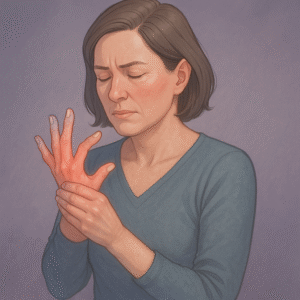Scleroderma is a chronic autoimmune disease that causes hardening and tightening of the skin and, in many cases, affects internal organs and blood vessels. The body’s immune system triggers an overproduction of collagen, leading to fibrosis (thickening and scarring of tissue).
It comes in two main forms:
-
Localized scleroderma – affects skin only
-
Systemic sclerosis – affects skin and internal organs

